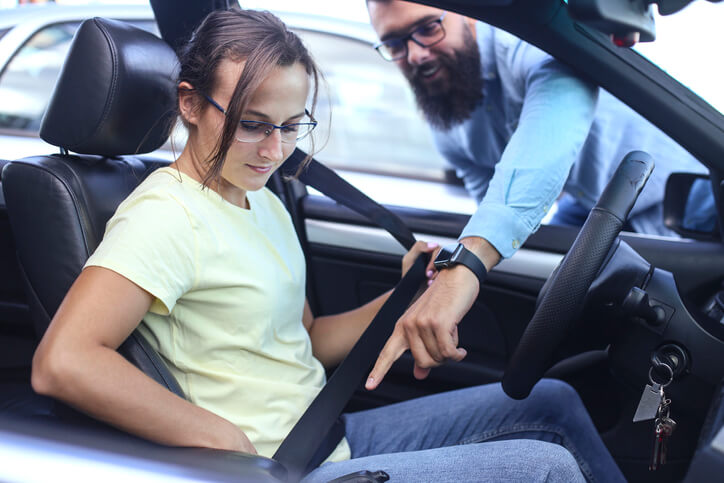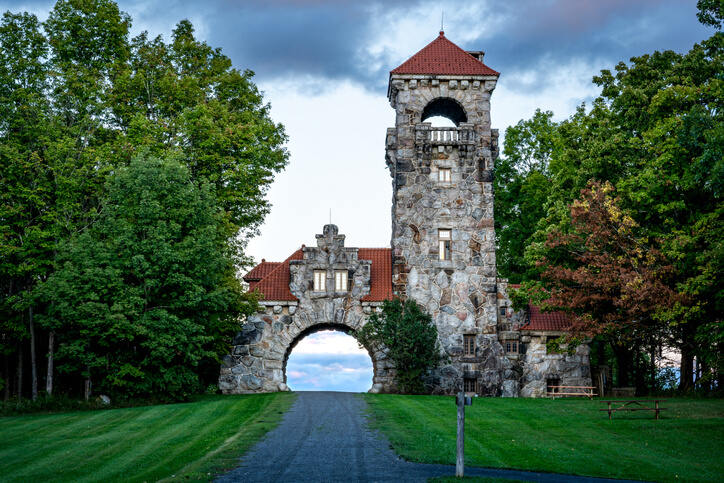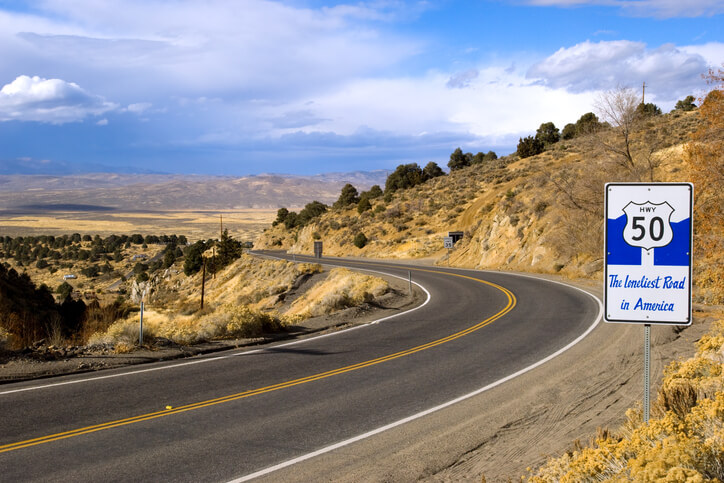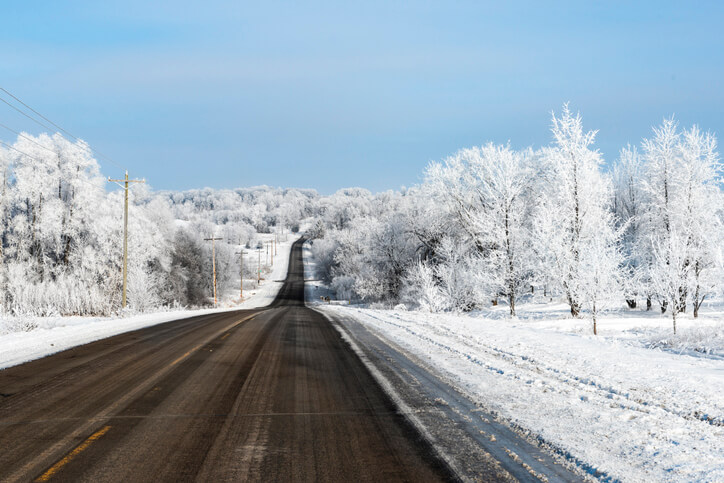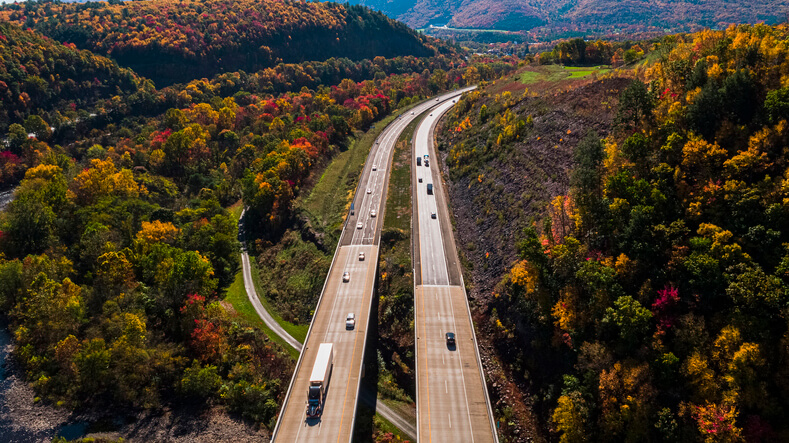Are you planning to hit the road in the Hoosier State? From bustling city streets to tranquil rural landscapes, Indiana offers a diverse range of driving experiences. However, navigating the state’s highways and byways can be challenging, especially if you’re unfamiliar with the unique laws and driving conditions. In this blog post, we will provide a comprehensive guide to Indiana driving laws, safety tips, and known problem intersections so you can confidently take the wheel and enjoy the ride with your driver’s license in Indiana.
Whether you’re a new resident, just getting started behind the wheel, or a seasoned Indiana driver, understanding the state’s driving laws and regulations is crucial for ensuring the safety of you and your passengers with a driver’s license in Indiana. We will cover everything from license restrictions and renewal procedures to navigating roundabouts and Amish country. So buckle up, and let’s get started!
Indiana License Laws at a Glance
- Familiarize yourself with Indiana driver’s license restrictions, including age limits, nighttime driving rules, and learner permit requirements.
- Adhere to the unique laws of Indiana regarding cell phone use while driving, seat belt regulations, and navigating construction zones.
- Be prepared for known problem intersections and roadways in the state by following safety tips such as reducing speed on rural roads or being alert when approaching roundabouts.
Understanding Indiana Driver's License Restrictions
Navigating the path to obtaining a driver’s license in Indiana comes with its own rules and restrictions, including the importance of driver’s education and the driving skills test. These limitations are designed to ensure that drivers acquire the necessary skills and experience before being granted full driving privileges. Knowing these restrictions will help you avoid violations and keep a clean driving record.
Different stages of Indiana driver’s licenses come with specific restrictions to ensure road safety. For example, Learner’s permit holders must follow particular guidelines, such as driving only with specific individuals and meeting age requirements. On the other hand, probationary license holders face limitations on nighttime driving, passenger allowance, and cell phone usage. We will further explore these restrictions and their impact on Indiana drivers.
Limitations for Learner’s Permit Holders
Obtaining a learner’s permit is the first step to getting behind the wheel in Indiana. To obtain a learner’s permit, applicants must sign up for a behind-the-wheel training program. They must then pass a vision test and knowledge exam. Once you have your permit, knowing the associated restrictions becomes critical.
Learner’s permit holders in Indiana must adhere to specific rules, such as driving only with a licensed instructor, a certified driver rehabilitation specialist, or a licensed driver who is at least 25 and related to the holder by marriage, blood, or legal status.
Furthermore, the minimum age for obtaining a learner’s permit in Indiana is 15 years old. Complying with these restrictions lets you practice safe driving habits and gear up for your next driving stage.
Probationary License Restrictions and Exceptions
The next stage after obtaining a learner’s permit in Indiana is the probationary driver’s license. This license has its restrictions and exceptions designed to keep probationary drivers safe and ensure they gain valuable experience behind the wheel.
For the first 180 days of holding a probationary license, nighttime driving is restricted from 11 p.m. to 5 a.m. Sunday to Thursday, and from 1 a.m. to 5 a.m. on Saturday and Sunday mornings.
Additionally, passenger limitations apply, with exemptions for transporting one’s child, sibling, stepchild, step-sibling, or spouse without an accompanying individual. Complying with these restrictions and exceptions aids in developing responsible driving habits ensuring safety on Indiana roads for you and others.
Unique Indiana Driving Laws
Although many driving laws are universal across the United States, Indiana has unique regulations that drivers must be aware of. These laws cover various topics, such as cell phone use while driving, seat belt requirements, and navigating construction zones. Understanding these distinct rules will not only assist you in avoiding fines and penalties but will also contribute to everyone’s safety on the road.
In the subsequent sections, we will delve into these unique Indiana driving laws with more particulars. From understanding how to use your cell phone safely behind the wheel to abiding by the state’s seat belt laws, these tips will help you navigate the roads with confidence and ensure that you stay on the right side of the law.
Cell Phone Use While Driving
In today’s fast-paced world, staying connected is more important than ever. However, using your cell phone while driving can be a major distraction and a significant risk to your safety and the safety of others on the road. Indiana has enacted specific laws to regulate cell phone use while driving, aiming to reduce accidents caused by distracted drivers.
Indiana law doesn’t allow drivers under 18 years old to use telecommunications devices while driving. If you’re under 18 years of age, you are, however, permitted to make emergency 911 calls. For drivers 18 and older, the law allows using hands-free devices while operating a vehicle.
Indiana Seat Belt Laws
Seat belts save lives. Wearing a seat belt is one of the simplest yet most effective ways to protect yourself and your passengers in a crash. In Indiana, seat belt laws require all individuals aged 16 and over to wear a seat belt when the motor vehicle moves forward.
Indiana’s seat belt laws are enforced at a primary level, which means that a traffic stop and ticketing may be enforced for not wearing a seat belt. Understanding and sticking to these laws means taking a significant step towards ensuring your safety and that of your passengers on Indiana roads.
Driving in Indiana Construction Zones
Construction zones are a common sight on Indiana roads, and navigating through them can be challenging and potentially hazardous. To ensure the safety of workers and drivers, Indiana has established specific laws and regulations for driving in construction zones.
When driving in construction zones in Indiana, it’s crucial to follow these regulations:
- Reckless and aggressive driving through a work zone is classified as a Class A misdemeanor, with potential penalties of up to one year in jail and a $5,000 fine.
- Speeding in a work zone can result in fines ranging from $300 for a first offense to $1,000 for a third offense.
- Always pay attention to warning signs and be aware of lane closures, detours, and moving equipment.
Driving carefully and considering the safety of workers in the construction zone promotes a safer environment for everyone.
Driving with Young Children in Indiana
Ensuring the safety of young passengers is a top priority for every responsible driver. Indiana’s child passenger safety laws outline the proper use of car seats, booster seats, and seat belts for children based on their age, weight, and height.
Children from birth to eight years of age must be restrained in child restraints, while those aged eight to sixteen years must be restrained in either child restraints or seat belts. Following these regulations is a vital move towards safeguarding your young passengers and fostering a culture of safety on Indiana roads.
Move Over Law
Emergencies can happen at any time on the road, and drivers must know how to respond appropriately. Indiana’s Move Over Law requires drivers to change lanes or reduce speed when approaching an emergency vehicle, tow truck, or utility vehicles with flashing lights.
Adhering to the Move Over Law helps protect the safety of emergency responders, tow truck operators, and utility workers who risk their lives to assist others. Remember, when you see flashing lights on the side of the road, move over or slow down to protect those who protect us.
Renewing Your Indiana Driver's License
A driver’s license is more than just a piece of plastic – it’s a ticket to freedom and mobility, especially when using car rental services. To avoid any issues with the BMV and maintain your driving privileges, it’s critical to renew your Indiana driver’s license punctually and adhere to the appropriate procedures.
To renew your Indiana driver’s license, you’ll need to:
1. Schedule an appointment with the Bureau of Motor Vehicles (BMV)
2. Bring the necessary documents, such as proof of identity, residency, and Social Security number
3. Pass a vision screening
4. Pay the required fees
Once you’ve completed these steps, you’ll receive your new Indiana driver’s license, ensuring that you can continue to enjoy the open road.
New Indiana Residents: Obtaining a Driver's License
Welcome to Indiana! As a new resident, one of your first tasks is obtaining an Indiana driver’s license. But don’t worry – the process is straightforward and designed to help you transition smoothly to driving in the Hoosier State.
To obtain a driver’s license as a new Indiana resident, you must:
1. Schedule an appointment with the Bureau of Motor Vehicles (BMV)
2. Pass a vision screening
3. Take and pass the knowledge exam and driving test (skills examination)
4. Provide the necessary documents, such as proof of identity, residency, and Social Security number
5. Pay the required fees
Once you’ve completed these steps, you’ll receive your new Indiana driver’s license, and you’ll be ready to hit the road and explore your new home.
Known Problem Intersections and Roadways in Indiana
Driving in Indiana can be a breeze, but certain intersections and roadways are known for their problematic nature. These areas may be prone to heavy traffic, congestion, and accidents, making them challenging for even the most experienced drivers.
In this section, we’ll examine some of Indiana’s most problematic intersections and roadways, such as I-65 and I-70 in Indianapolis, the “Borman Expressway” (I-80/94), and U.S. 31.
By familiarizing yourself with these problem areas, you’ll be better prepared to navigate them safely and efficiently, reducing the risk of accidents and ensuring a smoother driving experience.
I-65 and I-70 in Indianapolis
The I-65 and I-70 interchange in Indianapolis, known as the North Split, is one of Indiana’s most heavily traveled and hazardous interchanges. Frequent accidents and heavy traffic make this area particularly challenging for drivers, requiring extra caution and awareness.
To safely traverse this troublesome intersection, staying alert is vital, as is maintaining a safe following distance and being prepared for sudden changes in traffic flow.
By keeping these safety tips in mind, you’ll be better equipped to handle the challenges presented by the I-65 and I-70 interchange and continue on your journey with confidence.
The “Borman Expressway” (I-80/94)
The “Borman Expressway” (I-80/94) is a major east-west highway in northwest Indiana known for its heavy traffic, congestion, and high rate of accidents. This busy roadway can be particularly challenging for drivers, especially during peak hours when traffic volumes are at their highest.
For safety on the “Borman Expressway,” here are some tips to follow:
- Maintain vigilance and stay alert while driving
Obey posted speed limits
- Be prepared for the unexpected, such as sudden lane closures or traffic backups
- Adopt a defensive driving approach
- Exercise extra caution on this problematic roadway
By following these tips and engaging in supervised practice driving, you’ll minimize the risk of accidents and ensure a safer driving experience for all.
U.S. 31
U.S. 31 is a major north-south highway in Indiana with a history of traffic congestion, particularly in urban areas. As a crucial transportation artery for the state, drivers need to be aware of the potential hazards and challenges presented by this roadway.
To safely traverse U.S. 31, follow these safety tips:
- Maintain alertness
- Maintain a safe following distance
- Be prepared for sudden changes in traffic flow
- Be aware of any construction or roadwork taking place
So keep these tips in mind the next time you tackle U.S. 31.
Indiana Driving Safety Tips
While driving in Indiana can be rewarding and enjoyable, maintaining safety and being ready for varying driving conditions is vital. Whether navigating rural roads, roundabouts, or dealing with inclement weather, following safety tips and best practices can go a long way in ensuring a safe journey for you and your passengers.
In this section, we’ll share some crucial safety tips for driving in Indiana, including advice for:
- Navigating rural roads
- Roundabouts
- Amish country
- Dealing with the state’s unpredictable weather conditions
Rural Roads
Rural roads in Indiana can provide a peaceful and scenic driving experience, but they are not without their hazards. Many rural roads are narrow and bordered by ditches or cornfields, making navigating challenging, especially at night or during inclement weather.
For safety on rural roads, reducing your speed is crucial. Stay alert for hidden driveways, and be prepared to slow down or stop for slow-moving farm machinery or wildlife crossing the road. By exercising caution and following these safety tips, you’ll be able to enjoy the beauty of Indiana’s countryside while keeping yourself and others safe on the road.
Roundabouts
Carmel, Indiana, boasts more roundabouts than any other city in the United States. While these circular intersections can be confusing for unfamiliar drivers, they have effectively reduced traffic congestion and accidents.
As you approach roundabouts in Indiana, remember to:
- Slow down
- Yield to vehicles already in the roundabout
- Follow one-way signs at all times
- Be mindful of pedestrians and bicycles
- Use your turn signals to indicate your exit when leaving the roundabout
Weather Conditions
Indiana experiences various weather conditions, from severe thunderstorms and tornadoes in the spring and summer to snow and ice in the winter. This variety of weather can lead to rapid changes in road conditions, making it essential for drivers to be prepared and adapt their driving habits accordingly.
Driving in inclement weather requires the following precautions:
- Maintain a safe following distance
Reduce your speed
- Use your headlights
- Be prepared for sudden changes in road conditions, such as ice or standing water, and adjust your driving as needed.
By staying vigilant and adapting to the weather, you’ll be better prepared to handle any challenges that come your way on Indiana’s roads.
Amish Country
In northern Indiana, drivers should be prepared to share the road with horse-drawn Amish buggies, especially in areas like Shipshewana and Nappanee. These buggies can be difficult to see, particularly on dimly lit rural roads, making it essential to exercise extra caution and slower speeds.
When encountering Amish buggies, exercise patience, allow ample space, and only overtake when safety permits. By respecting their presence on the road and exercising caution, you’ll contribute to a safer driving environment for everyone in Indiana’s Amish country.
In Conclusion
Navigating Indiana’s roads can be a rewarding experience, but it’s crucial to familiarize yourself with the state’s unique driving laws, restrictions, and safety tips. Understanding the requirements for obtaining and maintaining a driver’s license, as well as being aware of the various problem intersections and roadways, will help you confidently navigate the Hoosier State.
By following the safety tips and best practices outlined in this blog post, you’ll be better equipped to handle any challenges that come your way on Indiana’s roads. Drive safe, stay alert, and enjoy the journey!
Frequently Asked Questions
What do I need to get my driver’s license in Indiana?
To get your driver’s license in Indiana, you’ll need to make an appointment at the Bureau of Motor Vehicles (BMV) with documents such as your Log of Supervised Driving, Driver’s Ed certificate of completion, Learner’s permit, Form 54706, proof of identity, Social Security Number, citizenship or lawful presence, and Indiana residency. You’ll also need to pass a vision screening, written knowledge, and driving skills examination.
Can I get a new Indiana license online?
Unfortunately, you cannot get a new Indiana license online; instead, you must visit your local BMV branch if you need to meet the specific criteria for renewing it online.
When can you get your license in Indiana without driver’s Ed?
You can get your license in Indiana without driver’s Ed at 16 years and 270 days old. To qualify, you must have a valid learner’s permit for 180 days.
Can I drive my friends at 16 in Indiana?
At 16, you may not drive with passengers for the first 180 days after getting your probationary license in Indiana unless accompanied by a licensed instructor, an individual with a valid driver’s license who is at least 25 years of age, or your spouse who is at least 21 years of age.
What are the restrictions for Learner’s permit holders in Indiana?
Indiana requires learner permit holders to drive only with a qualified instructor or driver over 25 years old and related to the permit holder. The minimum age for obtaining a permit is 15.



